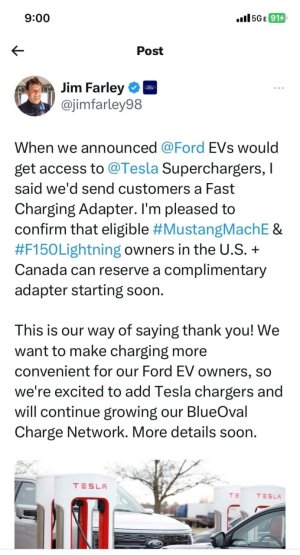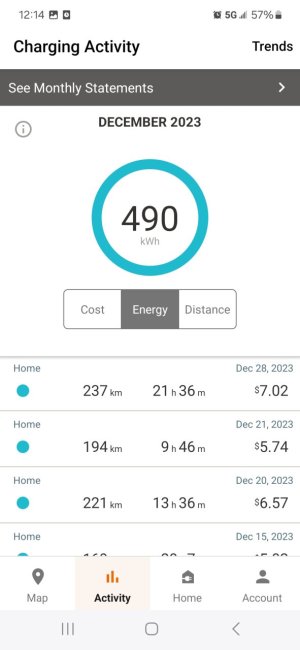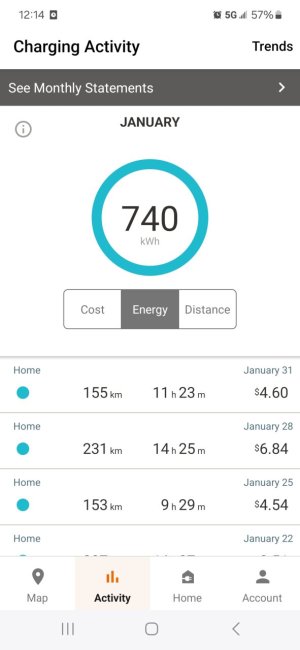kaelc
Well-Known Member
Nice! I’ve been calculating the range needed for a Victoria to Mount Washington and back ski trip. I had been worried about the climb up the mountain and over the malahat. If I gave up the big boat/truck/camper I could afford ski passes and spend more time with family in the valley.Off to the ski hill yesterday, an illustration of the effect of big elevation gain/loss.
Range at departure: 168 km. Temp +2°C
Range on arrival at Apex: 90 km. Temp 0°C.
Range "consumed": 78 km
Actual distance driven: 36.2 km
Start elevation 385 m
Destination elevation 1700 m
7 hours later:
Range at departure from Apex: 86 km. Temp +1°C
Range on arrival home: 92 km. Temp +6°C
Range "gained": 6 km
Actual distance driven: 36.2 km
Round trip:
Range at departure: 168 km
Range on arrival: 92 km
Range "consumed": 76 km
Actual distance driven: 72.4 km
So the big energy consumed to lift a 3 ton rig 1300 metres up a mountain still outweighs the energy regained coming back down, but not by a huge margin.
I've driven that road a zillion times over 35 years, and it's always involved a lot of gearing down to avoid burning up brakes. Not any more, one pedal driving makes it so easy. You just drive down the mountain at whatever speed you choose. No gear selection, no heavy braking. Gaining back most of the energy used on the climb makes it even better.
Hope the snow was nice!





